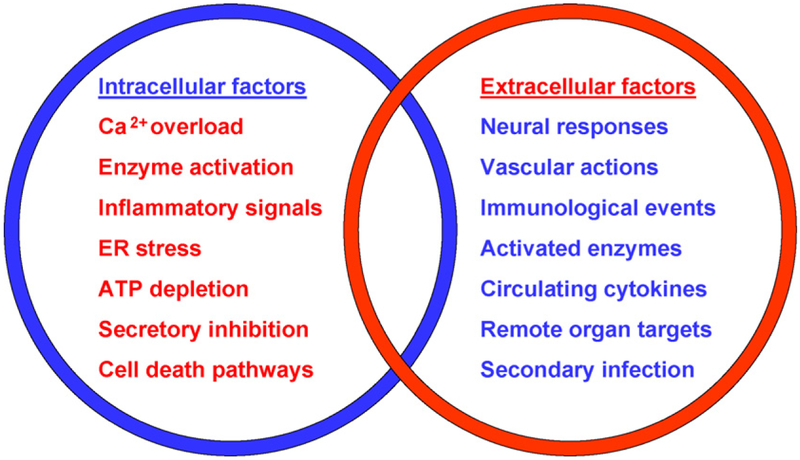Figure 1.
Intra- and extracellular factors which contribute to the pathogenesis of pancreatitis. Acinar cell injury is the principal driving event, initially mediated via Ca2+ overload, leading to inflammatory signals that occur following cell stress. The loss of normal enzyme secretion and ATP production induce cell death pathways, which with severe stress are most likely to result in necrosis of cells. These factors contribute to and interact with extracellular factors, mediated initially via neural and vascular—endothelial mechanisms that accelerate inflammation. Activated resident and infiltrating monocyte-macrophages and/or neutrophils exacerbate the tissue injury, adding to the effects of activated interstitial and circulating digestive enzymes. Circulating cytokine responses increase the likelihood of remote organ damage, compromising recovery, while secondary infection adds to the likelihood of poor outcome.

